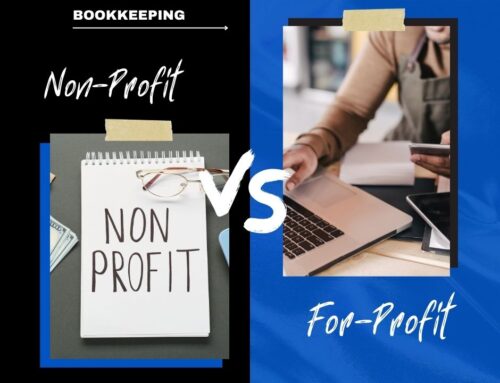Every business needs to accurately track their financial data.
But I see so many small business owners and entrepreneurs who are intimidated by the books. They avoid their accounting department altogether, which is a major concern.
At the bare minimum, you need to be using the three major financial statements:
- Balance Sheet
- Income Statement
- Cash Flow Statement
These reports are crucial for running the day-to-day operations of your business.
If you’re planning to raise funds from investors or secure a loan from a lender, these statements will be a requirement as well. Your financial reports help you track your margins, manage your cash flow, and make your life easier when it comes time to file your taxes.
Even if you have a bookkeeper that manages your financials, as a small business owner, you still need to know how to create, read, and interpret these documents.
Your balance sheet, income statement, and cash flow statement tell the story of your business from a financial perspective.
Are your products making money? Can you afford to hire a new employee? Is it possible to purchase a new piece of equipment?
You can’t answer these questions without the three essential financial reports. I’ll explain each one in greater detail, so you have a better understanding of how they work.
Balance Sheet
A balance sheet can be best described as the current snapshot of your business. This includes your financial condition (things like liquidity, leverage, and ROA).
In order to understand how a balance sheet works, you need to know the formula of the financial equation:
Assets = Liabilities + Equity
The two sides of this equation must always balance. If they aren’t balanced, you know there is an error that needs to be addressed.
There are three types of assets:
- Current Assets
- Fixed Assets
- Other Assets (such as intangible assets)
Anything that can be converted to cash or cash equivalents within a year is considered a current asset. This includes cash, inventory, prepaid expenses, short-term investments, and accounts receivable.
Fixed assets refer to machinery, buildings, vehicles, and office equipment. These are long-term tangible assets.
Other assets, such as goodwill and intellectual property are considered intangible assets. Your copyrights, patents, and trademarks are also other assets.
There are also two types of liabilities:
- Short-term Liabilities
- Long-term Liabilities
Short-term liabilities mature within one year. Accounts payable, dividends payable, short-term debt, and taxes payable would all fall into this category. Long-term liabilities are debts that mature in more than one year, such as mortgages and notes payable.
Owner’s equity is any money that would be left over if the business sold all its assets and paid off all of its liabilities.
Income Statement
Income statements are also known as profit and loss statements.
In my experience, this is the report that most business owners are familiar with because it’s easy to read.
This statement an indicator of your financial performance throughout a specific period, ranging from a couple of months to a year, and should be done on a monthly basis.
These are the components of an income statement:
- Gross Revenue
- COGS (cost of goods sold)
- Gross Margin
- Operating Expenses
- EBITDA (earnings before interest, tax, depreciation, and amortization)
- Net profit (or loss)
A profit and loss statement essentially keeps track of your sales and expenses.
Start with gross revenue and subtract the COGS to find the gross margin. Then you subtract total operating expenses from the gross margin to calculate the net profit.
Income statements are essential for predicting sales, measuring KPIs, and projecting the future performance of your small business.
Cash Flow Statement
The cash flow statement is the most complicated report of the three. It’s used for accrual-based bookkeeping.
In short, this report tracks cash in, and cash out. Each incoming and outgoing transaction is listed on the cash flow statement but in separate categories.
Cash flow statements offer a comprehensive view of your business operations. It’s common for investors to look at cash flow statements with heavy scrutiny since the report details a company’s choices about expenses.
This statement keeps track of all different types of business activities. These activities can be broken down into three categories:
- Operations
- Financing
- Investing
Operations include all functions that your small business needs to operate. I’m referring to inventory, accounts payable, and accounts receivable.
The financing part of your cash flow statement is comprised of the things that won’t necessarily impact your bottom line but will change the amount of cash in your bank account. Repaying loans and acquiring debts would fall into this category.
If you’re acquiring assets, selling assets, or making long-term changes to your equipment, the investing section of your cash flow statement would be impacted.
Cash flow statements help you make important business decisions with greater accuracy. Having a better idea of your future cash positions make it easier for you to make an investment or decide to hold off on making a big purchase.
For example, let’s say you you’re presented with a business opportunity. You want to invest, but don’t think you’ll have enough cash in the upcoming year to make payments. A year later, you realize that you would have had more than enough cash for that investment, but the opportunity has passed.
Alternatively, you might invest in an opportunity thinking that cash won’t be a problem. But a few months later it becomes obvious that you’re running out of cash.
Both scenarios can be avoided if you have an accurate cash flow statement. You’ll be able to accurately predict any cash shortages or surpluses, so you don’t put your business in a compromising position.
Conclusion
Every single business needs these three essential financial reports. Yes, even small businesses need them as well.
If you need help creating and analyzing a balance sheet, income statement, and cash flow statement, you might want to consider working with a professional.
Take advantage of outsourced bookkeeping services or an interim CFO. A trained Controller can generate these reports for you, and an experienced CFO will help you with the interpretation.
Here at Navitance, we specialize in bookkeeping for startups. Let us handle all of this for you, so you can spend your time focusing on other areas of your business.





